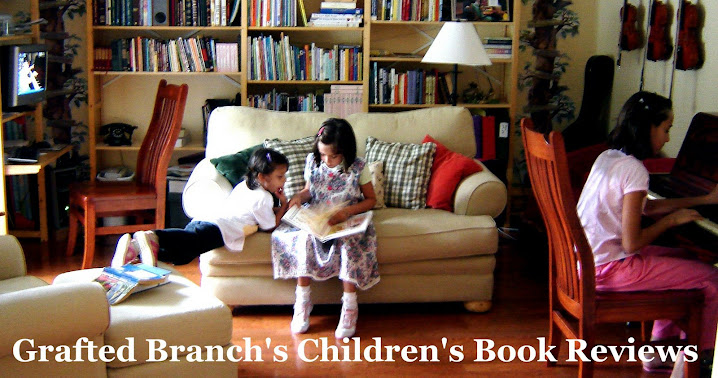by C. S. Lewis
Listening age: 6+

This is the FIRST book in the 7-book series written by Oxford English Professor-but-Christian convert-anyway, C.S. Lewis. It is called
The Lion, the Witch and the Wardrobe. It was written first. It was published first. It was meant to be read first. Read this one first.
Why? I'll tell you why. Because in the course of the series there are little asides now and then from the author to the reader which more than clearly express Lewis' assumption that you are reading the books in the order they were written. And better yet--because there is a fantastic goose-bump moment at the end of the sixth book that you and your child will miss out on completely if you read
The Magician's Nephew first.

This is the SIXTH book in the series. Some people--in fact, the new edition publisher--will tell you to read
The Magician's Nephew first because...because...well, because maybe they are ignorant and have not read the series. And because they take themselves and their classical method too seriously. Not everything must bow to the chronological time line. Our great God made us more intelligent than that! And your children too. DO NOT READ THIS BOOK FIRST just because the events in it precede those of the actual 1st book in the series. Read this book 6th. After the 5th book:
The Horse and His Boy, (and before the 7th book:
The Last Battle). After the 4th book:
The Silver Chair. After the 3rd book:
The Voyage of the Dawn Treader. After the 2nd book:
Prince Caspian. After the 1st book:
The Lion, the Witch....you get the point.
*sigh* O.k. That said, I must say a bit more before I can tell you of the excitement that these books brought us this summer. I will only acknowledge that there is some controversy in Christian circles about some of the fantasy elements in this book. Again...people taking themselves too seriously. There is much Christian allegory, but the series is not strictly such, and Lewis never meant it to be. There are "nods" to mythology and fairy tales; wicked magic and miracles disguised as magic; good battling evil, and you can read some pretty strong opinions about all that on your own through a Google search. Or you can read
this scary condemnation if you can make sense of it past the giant chip on someone's shoulder.
In the end, my advice is to ask the Lord. Remembering that it is not what comes at us from the outside, but rather what bubbles up from our hearts that defiles, I encourage you to pray about your own children--their strengths and their weaknesses. Can they differentiate Truth from fantasy? Can they recognize sin (attitudes, conspiracy, faithlessness) without inviting it to live in them?
Two years ago, I could not say yes. Two years ago I was concerned that reading these books to my youngest girls would be like passing them through the fire. They were not ready. Their knowledge of the Holy One was not steeped enough to rightly divide the Word of Truth.
This summer, I was prayerfully able to say yes, and I have not regretted it.
These books involve different children, across a span of time, and the adventures that bring them to, and through, a place called Narnia. It is filled with talking beasts and the battle between good and evil permeates the land. While I'm fairly sensitive to exposing my girls to gratuitous bad behavior in books or movies, the occasional "rotten apple" child in these story lines always serves the bigger purpose of teaching the reader about reaping and sowing, repentance, forgiveness and redemption--or even sin and judgment.
There is some violence in some battle scenes along the way, and some of the descriptions are graphic enough to have unnerved my 8 year old at bedtime (though we never read these books after dinner). My 6 year old girl was not phased--go figure. My 13 year old girl has been fashioning and sewing Susan Pevensie's quiver and archery dress from scratch ever since. She liked the stories very much, had read them before, but I think really enjoys when I read them to her complete with my sad attempts at Middle-Eastern accents.
And that reminds me...there is another controversy I found during a Google search. *exasperated sigh* Lewis' covert, yet undeniable use of Isl@m as the pattern for the "others"--sometimes friendly, sometimes enemy, but clearly outsiders--has some people (though not actually the supposedly offended people) screaming, "Racist!" because of his acknowledgment of turbans and scimitars.
Blah, blah, blah.
I guess I just don't get wrapped around the axle so easily. Jesus loves the little children, all the children of the world--red and yellow, black and white--they are precious in His sight...
But, back to my review: the best thing that came of our adventures in Narnia is a sense of the eternal. Not the
actual eternal, mind you, but the ability to
imagine the eternal. And that it is not
lesser just
because it is
invisible. Our family believes the Bible and reads it every day, but somehow Lewis' vivid descriptions of Narnia and the children's adventures there served to exercise the faith imagination muscle of my littlest ones who have yet been so unsure, even scared, at the thought of an invisible Jesus. Even though they know He loves them.
When my youngest was just 3 and afraid to go upstairs by herself, I reassured her that she was never by herself because the Lord Jesus was with her. And I believe that with all my heart, and do not just say it to keep the peace or assuage a fear.
But to that, she fumbled around for the words to express, "But I want someone real....someone I can see."
Jesus loves the little children, it is true, but faith is a pretty abstract idea when you're them and it's dark at the top of the landing.
The children would give this series an enthusiastic "A+" for fun, suspense and adventure.
 by Natalie Savage Carlson
by Natalie Savage Carlson






















